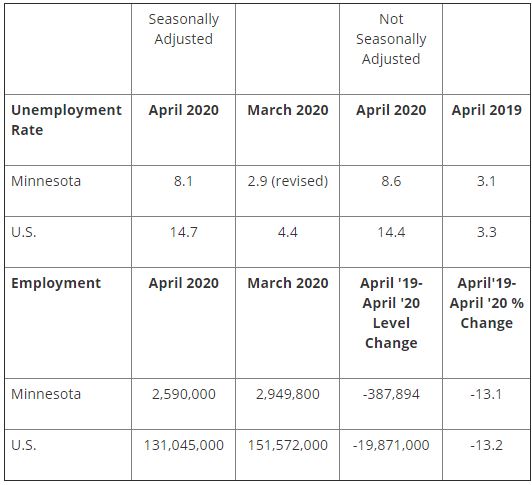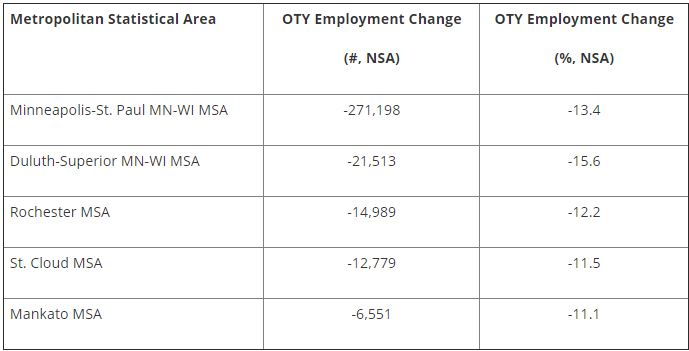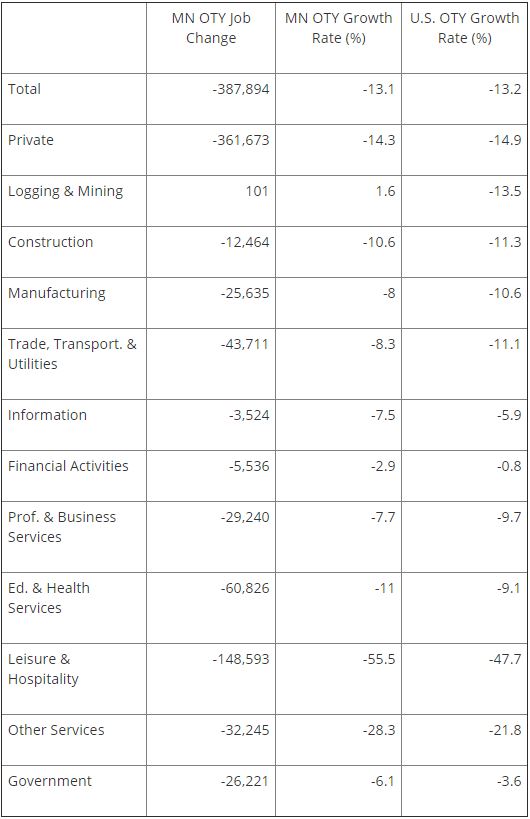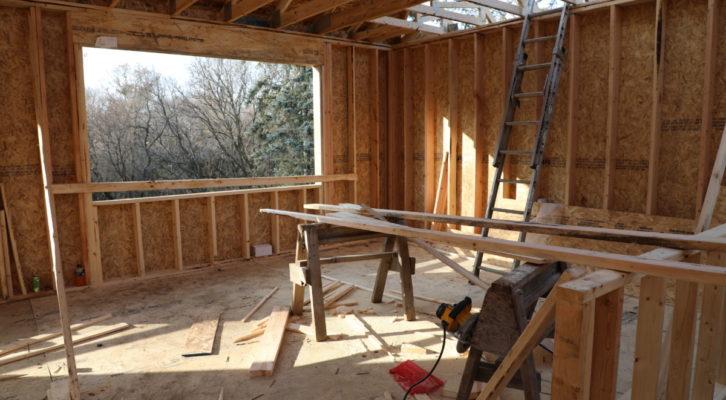Minnesota’s unemployment rate increased to 8.1% as businesses across the state felt the effects of the COVID-19 pandemic, according to the Minnesota Department of Employment and Economic Development (DEED). The U.S. unemployment rate for April also saw a sharp incline to 14.7% from 4.4% in March.
Minnesota lost 334,700 jobs in the private sector on a seasonally adjusted basis in April. Year-to-year the state was down 387,894 jobs since April 2019. This data shows the first full month impact of the COVID-19 pandemic. Unemployment Insurance data notes that 695,156 Minnesotans have filed for unemployment since mid-March.
Unemployment data and Unemployment Insurance data does not match because they are not quantified in the same manner. Workers can apply for and receive unemployment benefits if they are still working but have had their hours cut. This category of workers would still be considered employed and would not be counted in the overall unemployment data.
“While the COVID-19 pandemic has challenged our state in many ways, we continue to work closely with our state agency partners and health, business and labor leaders to reopen Minnesota businesses, safely return more people to work, and stem the tide of COVID-19 on our economy.” said DEED Commissioner Steve Grove.
Construction in Minnesota recorded a 10.6% employment loss since April 2019. Other industries saw sharp declines in their workforces. Leisure & Hospitality was down 55.5% since last year. Logging and mining was the only industry statewide that saw an increase to their job force with an increase of 101 jobs since April 2019.
In the Metropolitan Statistical Areas, employment growth rates were all down: Minneapolis-St. Paul MSA (down 13.4%), Rochester MSA (down 12.2%), St. Cloud MSA (down 11.5%), Duluth-Superior MSA (down 15.6%), and Mankato MSA (down 11.1%).


















